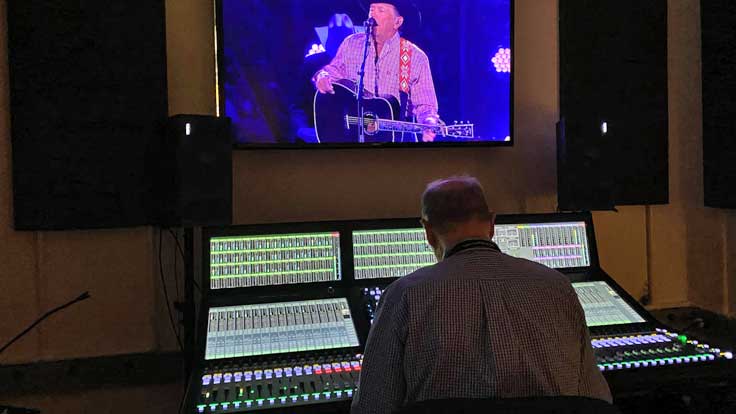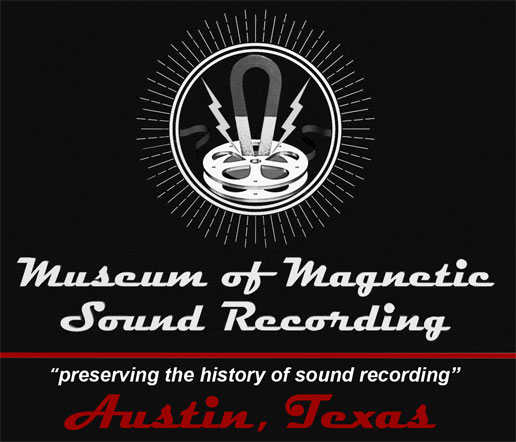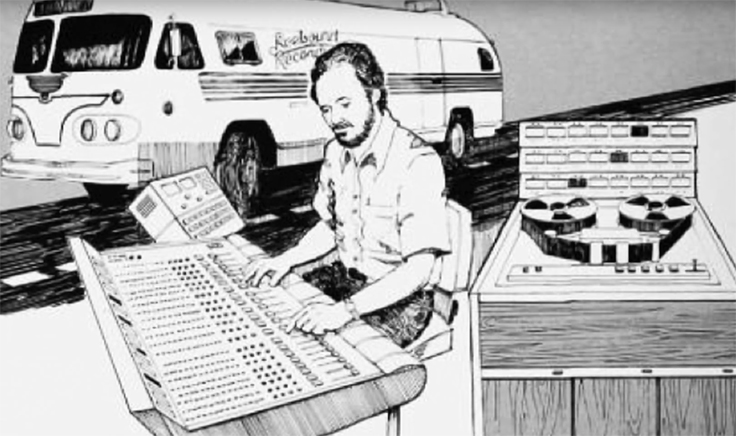MIX Magazine April 29, 2022

Riding the Mix at RodeoHouston
Houston Livestock Show and Rodeo holds all-star concerts 20 nights in a row for up to 73,000 people a night. For 28 years, Malcolm Harper has mixed each one for broadcast.
BY CLIVE YOUNG
PUBLISHED: 04/29/2022

Malcolm Harper of Reelsound Recording created broadcast mixes of every concert at RodeoHouston this year on a Solid State Logic System T S500 console.
Houston, TX (April 29, 2022)—Every year, some of the biggest names in music get roped in to play at the Houston Livestock Show and Rodeo (AKA RodeoHouston), held for 20 consecutive nights annually inside the city’s NRG Stadium. It’s an honor they take on eagerly, too, as it means performing for up to 73,000 people on any given night—a gig that can easily make (or revive) a career in one shot. This year’s 90th anniversary edition attracted 2.4 million visitors over its three-week run, as people came from far and wide to enjoy an evening of bull riding, steer roping and other competitions, capped off nightly by a one-hour concert on the rodeo’s custom mobile stage.
This year’s lineup of headliners included (to name only a few) Keith Urban, Tim McGraw, Ricky Martin, Luke Bryan, Maren Morris, Journey, Gwen Stefani, Dierks Bentley, Chris Stapleton, Khalid, Brad Paisley and Marshmello, but the run closed out with a finale concert by country royalty George Strait, the only artist to not share the bill with the namesake main event. Instead, the rodeo’s temporary dirt floor was removed overnight to allow for 10,000 more seats on the stadium floor (the dirt lives in its own nearby building the rest of the year) and Strait performed a full-length concert.
Despite the massive size, playing the Houston Rodeo may be the ultimate “stacks ‘n’ racks” gig. While there was a Solid State Logic L550 console on-hand this year to produce the rodeo’s live stadium audio, artists brought in their own FOH and monitor consoles, and tied into a giant L-Acoustics P.A. that LD Systems (Houston, TX) provides and installs annually for the length of the rodeo. While each artist’s team mixed their concerts as they saw fit, Malcolm Harper of Reelsound Recording (Austin, TX) returned for his 28th year of creating live mixes for broadcast so that the shows could appear on screens throughout the stadium and its surroundings, ensuring all visitors didn’t miss a note.
Working in the rodeo’s Music Room, located in an entirely different building a quarter mile from the stadium stage, Harper used an SSL System T S500-48 broadcast audio control surface for the mixes, which were also preserved for posterity on JoeCo Audio recorders. Since the artists brought in their own control gear, Harper’s split had to be worked out each day for the show. “Solid State Logic’s System T S500 gave me every option to interface audio from each band with analog mic inputs, MADI Bridge and SRC DANTE units,” said Harper.
Traditional analogue splits were tackled with three SSL SB 32.24 stageboxes for 96 Mic/Line inputs, while MADI splits were dealt with using a pair of SSL MADI Bridges plus Opti coax so that they could handle copper or fiber MADI at either 48 kHz or 96 kHz. For shows that required a Dante split, SSL loaned the Rodeo an HC Bridge SRC, which isolated the facility from a touring network, but which allowed up to 256 channels of AoIP to be shared at either 48 kHz or 96 kHz.
The result was a nightly musical nightcap that came off without a hitch— for 20 nights in a row. “Just the scale of it is, and how much technology has gone into it, is hard to comprehend,” marveled George Horton, VP Western Region for Solid State Logic, who was a liaison onsite for much of the rodeo’s run. “It’s an incredible event.”
Tour our collection!
We offer seven hours of 50 video segments via download about our reel to reel tape recorder and microphone collection and the history of magnetic recording available at this link.
ORDER THE VIDEO FILES ON LINE - was 14.95 NOW only $9.95
There are 50 QuickTime H264 854 X 480 files in this download. Play on MAC OS or Windows Media Player
While most content deals with the history and manufacturers of the reel to reel tape recorder, or tape deck, we cover many aspects of magnetic recording.
We provide 48 hours during which to download the files. After that the file access will expire. Once the files are downloaded they are yours to keep.
© 2018 Museum of Magnetic Sound Recording • Webmaster • All pictures and content on this web site are the property of the Theophilus family,the Museum of Magnetic Sound Recording and reel2reeltexas.com • Photos of items in our collection are available for sale. We do NOT provide copies of ads, nor photos from other sources! All photo work is billed at studio rates and a deposit is required.



